Once you buy a boat you want, it is time to determine what size outboard motor for what size boat. As you can guess, there is no magic formula for estimating it precisely, but you can get rough numbers when you check relevant information.
You should start with a boat type, a maximum passenger number, and the equipment weight you plan to carry. Then, you can determine the maximum horsepower recommended for your vessel. Finally, think about 2-strokes and 4-stroke motor options, right propeller size, and fuel type. Sounds complicated? Let’s make it easier!
Table of Contents
Motor Size Matters
Yes, an engine size matters, and it is crucial to pair it with an adequate boat size to let it run smoothly.
Bigger motors with higher horsepower offer numerous benefits for comfortable boating, such as:
- You can sail at high speed
- A more sizable engine provides better handling, particularly when sailing at midrange speeds
- It makes water sports cozier
- You can count on better time maneuvering
- Such an engine will give you better control and provide more secure sailing in harsh weather condition
- Surprisingly, a motor with a bigger fuel tank uses less fuel
Downsides of a small engine
A too-small engine typically has difficulty powering a bigger boat so it will spend more fuel than a bigger model. Another problem is sailing with more passengers and equipment since extra load requires a motor with more horsepower.
Therefore, you should check the max HP a boat can handle before purchasing. That rating will show you a top weight it can carry, and you can risk uncomfortable and unsafe sailing, plus possible Coast Guard fines when exceeding it.
Outboard motor size for your sailboat |
||
| Boat length | Boat weight | Motor horsepower |
| 18 feet (5.5 m) | 1,000 pounds (454 kg) | 1 to 2 HP |
| 20 feet (6 m) | 2,000 pounds (907 kg) | 4 HP |
| 22 feet (6.7 m) | 3,000 pounds (1,360 kg) | 6 HP |
| 24 feet (7.3 m) | 4,000 pounds (1,815 kg) | 8 HP |
| 25 feet (7.6 m) | 5,000 pounds (2,278 kg) | 9 HP |
| 26 feet (7.9 m) | 6,000 pounds (2,720 kg) | 11 HP |
| 27 feet (8.2 m) | 7,000 pounds (3,175 kg) | 13 HP |
| 28 feet (8.5 m) | 8,000 pounds (3,629 kg) | 15 HP |
| 30 feet (9 m) | 10,000 pounds (4,536 kg) | 18 HP |
| 32 feet (9.75 m) | 12,000 pounds (5,443 kg) | 22 HP |
| 36 feet (11 m) | 15,000 pounds (6,804 kg) | 28 HP |
| 40 feet (12.2 m) | 18,000 pounds (8,165 kg) | 34 HP |
The vessel horsepower ranges from 2.5 to 1,000+ HP for contemporary outboard motors. You should pick out the most powerful one your boat can handle to provide smooth and comfy sailing.
Things to Consider When Selecting an Outboard Boat Engine
Horsepower
Horsepower is used to measure the engine power. On average, your vessel will need 5 HP per 2,200 pounds (1,000 kg) its weight. Small boats shouldn’t use more than 75% to 80% of the max HP because of the possibility of rough waters and headwinds while sailing.
Only that way, you can count on enough thrust to drive as desire. You should think about a few things when determining how much horsepower your boat needs, including:
-
Manufacturer limits
Manufacturers’ recommendation always shows a maximum passengers number and cargo weight your boat can carry. You can also find the absolute max boat HP in the manual.
If you have a boat built after 1972, you can find a capacity plate with this information inside the transom. Older vessels, home-built models, and those made overseas typically don’t have that plate.
However, you can contact the manufacturer or look for their manuals online to discover limitations and recommendations for your boat.
-
Horsepower-to-weight ratio
The only way to precisely determine your boat’s necessary horsepower is to consider its weight. You can calculate this ratio in horsepower per pound or vice versa.
HP/boat weight = required horsepower per 1 pound (0.45 kg)
or
boat weight/HP = number of pounds per horsepower
Let’s say you have a boat weighing 5,000 pounds (2,268 kg) with an engine of 300 HP. The calculation will look like:
- 5,000 pounds / 300 HP = 16.6 pounds (7.5 kg) per horsepower
- 300 HP / 5,000 pounds = 0.06 HP per 1 pound (0.45 kg)
You should do the math to match the desired outboard engine with your boat size correctly. The result will show how fast your boat will go since its speed will be higher when these numbers are lower.
Boat use
Horsepower your boat needs will also depend on its use. Any additional equipment weight or pulling water skiers behind the vessel increase the power it needs.
-
Number of passengers
In this case, the rule is simple. Your boat engine will work properly only when it carries 25 to 40 pounds (11.5 – 18 kg) per horsepower.
Once you have this information, you can check the boat weight and add the total weight of the passengers you plan to host on it. Then, you can effortlessly determine engine HP that matches your boat.
-
Fuel efficiency
As you can guess, the motor HP impacts the boat’s fuel efficiency, but that doesn’t mean a higher-horsepower engine necessarily consumes more fuel.
For instance, your motor with lower HP will use more gas at full throttle than the one with higher HP running with less throttle.
Engine
-
Engine type
Both 2-stroke and 4-stroke engines are good options. You should choose one or another, depending on the feature crucial for you.
The rule of thumb is that 2-stroke motors are lighter and less expensive, while 4-stroke models with the same power are quieter. However, these differences are diminishing nowadays.
-
Engine weight
One of the vital things is to match the outboard engine weight and boat size. That way, you will ensure sufficient power for the desired speed without jeopardizing safety and maneuverability.
Most 2 to 10 HP outboard engines weigh 35 to 90 pounds (16 – 41 kg). On the other hand, you should count on 100 to 160 pounds (45.5 – 72.5 kg) for a 20 to 30 HP motor. In this case, you can have a problem carrying a too heavy engine around.
Required speed
The rule of thumb is that your boat needs more power to reach a higher speed. The equation says that 1 HP can move 40 pounds (18 kg) of boat weight at 20 mph (32.2 km/h). According to that, you can calculate that your boat weighing 2,000 pounds (907 kg) needs 50 HP to reach the speed of 20 mph (32.2 km/h).
Federal regulations
In the US, it is illegal to overpower your boat. The Code of Federal Regulations clearly defines vessel overpowering, so you should check it before getting into a situation to break federal law.
Insurance
You should know that your boat’s horsepower directly affects its insurance, and models with higher HP typically has higher premium costs. Keep in mind that the insurance company won’t cover a boat with an upgraded engine that exceeds the max HP recommended by the manufacturer.
Ways of Pair an Outboard Motor with Your Boat Size
The best way to properly pair an engine with a boat of a particular size is to determine its horsepower.
2 to 3.6 HP engine
These small, less than 40 pounds (18 kg) weight, 2-stroke outboard engines are an excellent option for portable boats, like:
- Canoes
- Inflatable boats
- Small pontoons
- Small sailboats
They can push small boats at 5 to 9.5 mph (8 – 15 km/h), depending on weather conditions, current, as well as boat weight and design.
5 to 6 HP engine
This horsepower range is ideal for boats weighing 8 to 11.5 pounds (18 – 25 kg), including:
- 12 feet (3.65 m) long inflatable boats
- Portable folding boats
- Large canoes
- 8 to 12 feet (2.5 – 3.65 m) long inflatable and dinghy boats
Such an engine can propel your vessel with one person at 10 to 17.5 mph (16 – 28 km/h).
8 to 9.8 HP engine
You should pick out this small but powerful 11.5 to 20.5 pounds (25 – 45 kg) heavy outboard engine for your:
- 10 to 14 feet (3 – 4.5 m) long inflatable and aluminum boats
- Large portable folding boat and sturdy canoe
- Up to 14 feet (4.5 m) long light fiberglass boats
An outboard motor in this range is an excellent option for propelling a boat carrying a light load and two people at 9.5 to 17.5 mph (15 – 28 km/h).
15 to 25 HP engine
Although powerful, these 16.5 to 23.5 pounds (36 – 52 kg) heavy 4-stroke outboard engines are still in a small outboard HP class. They are an excellent choice for:
- 10 to 14 feet (3 – 4.5 m) long inflatable boat
- 12 to 16 feet (3.65 – 5 m) long Jon boat, fiberglass boat, and aluminum fishing boat
These smooth-running engines can propel most boats to 25 mph (40 km/h) when carrying several people and heavy loads.
Summary
Whatever boat type you have, you should buy the smallest possible outboard engine that can allow a max hull speed with 90% of the revolutions per minute. Unless you want a higher-speed boat, you can use your 20 HP engine for twenty years and get an excellent fuel economy.
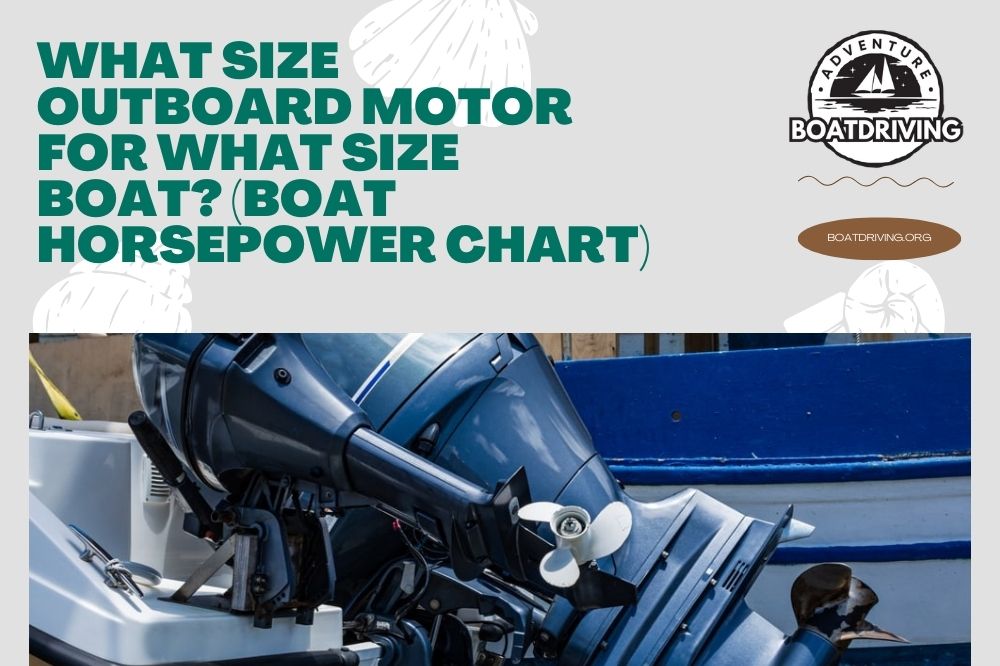
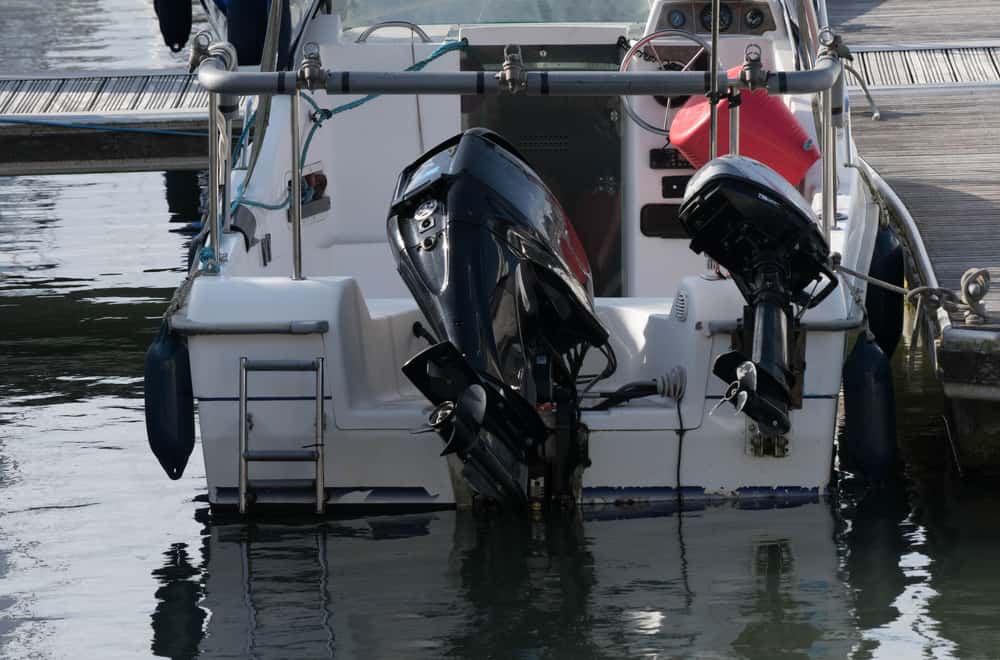
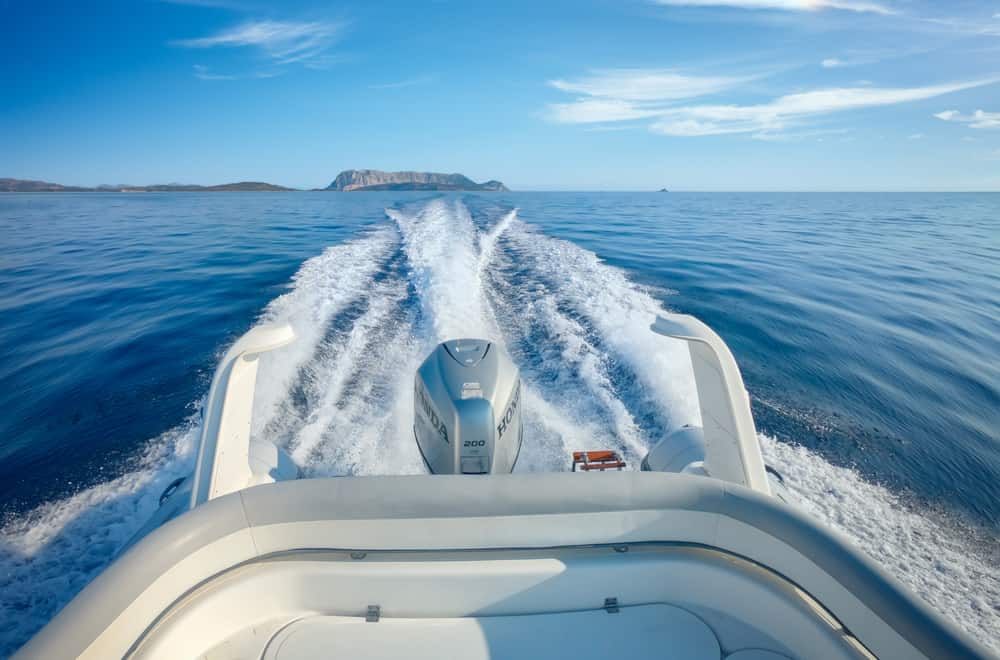
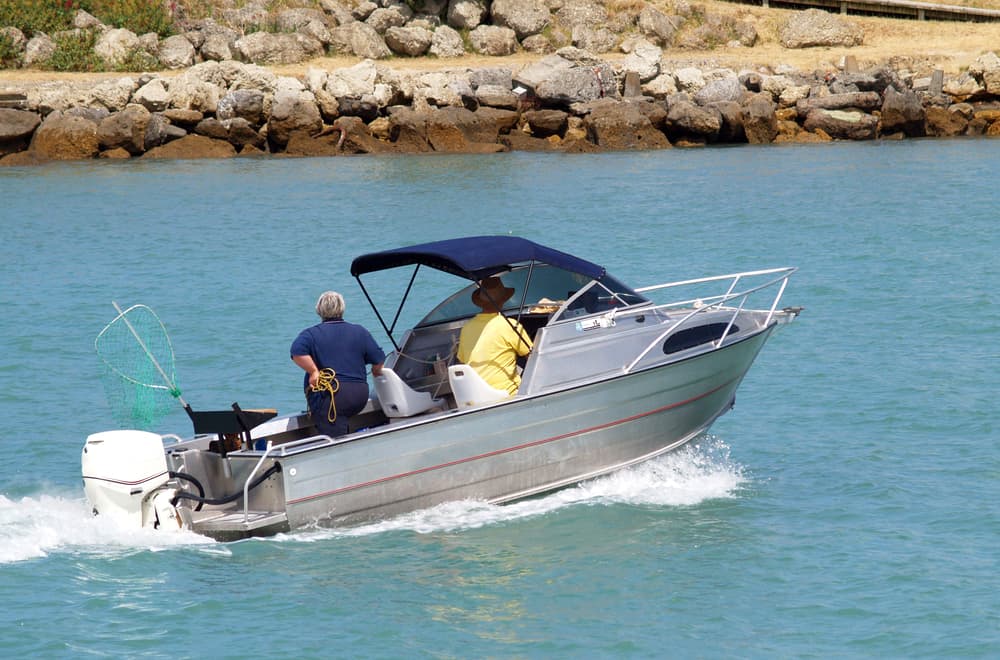
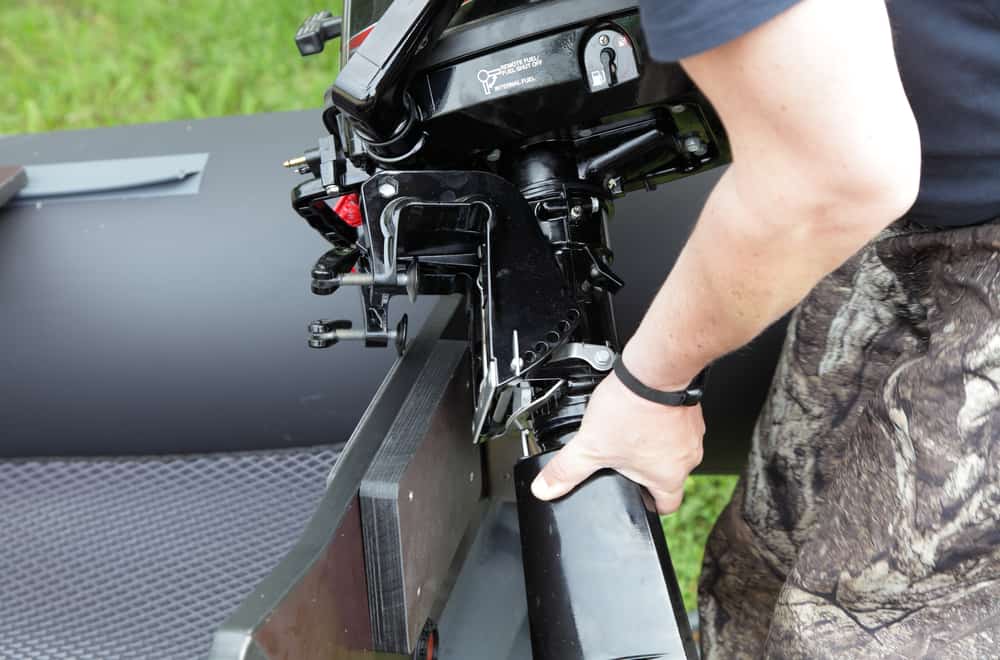
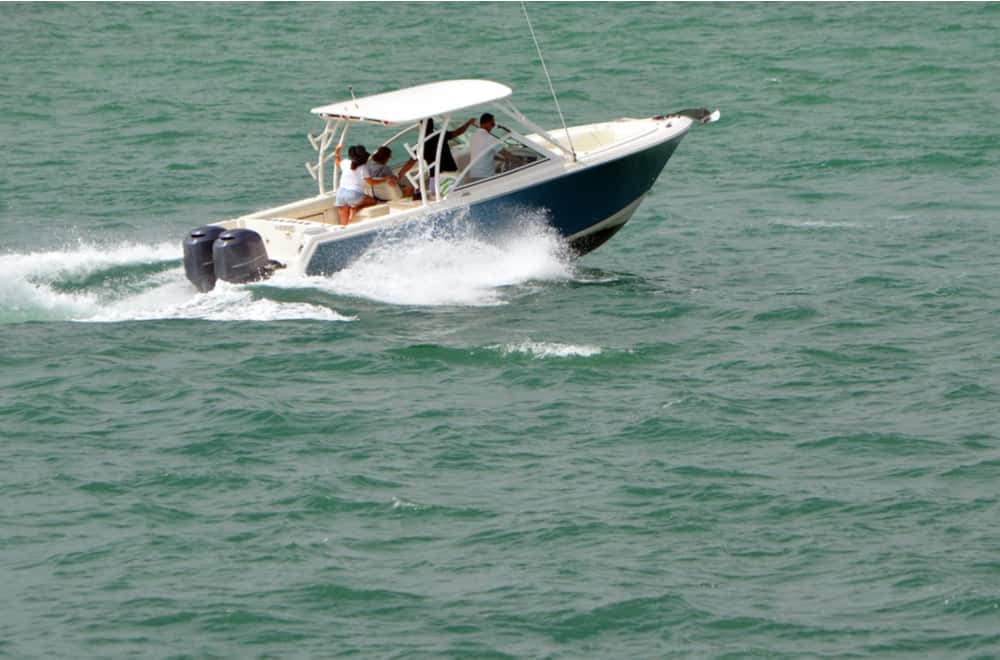
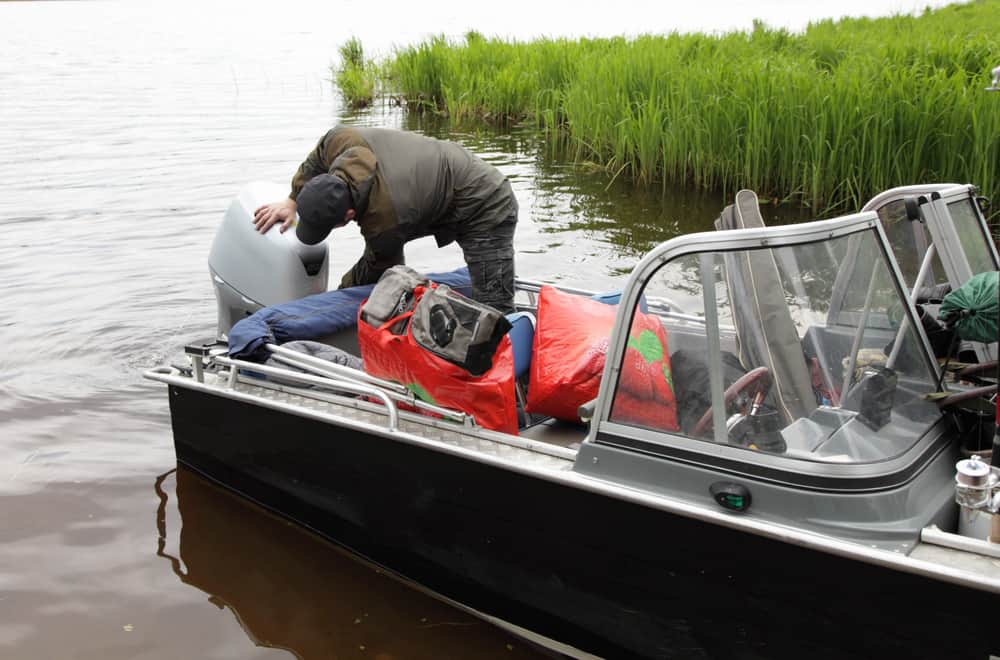

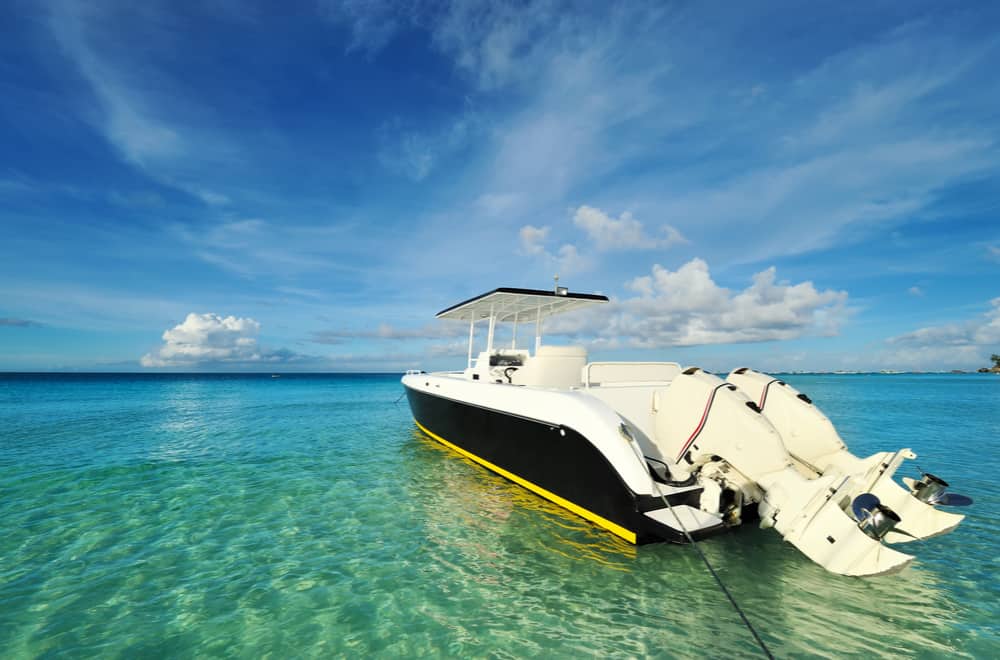
Look I’m getting confused. I’m looking at 20 to 21 foot fiberglass star craft. My weight is around 260 my girl is around180. The dealers are trying to sell me a 150 yamaha. A northern dealer is trying to sell me a 20 ft boat with a 70 hp yamaha. The price is nice for the 70 hp but I’m not shore that it’s good for that boat. Help.
The lower the “hp/lb” value, the faster the boat. For example, you have a 3,000-pound boat with a 200-horsepower outboard motor. A pound will correspond to 0.067 HP.
The weight boat is one of the variables to consider when finding the maximum horsepower. Calculating the ratio between horsepower and weight is straightforward. You only need your boat’s weight and its boat HP rating.